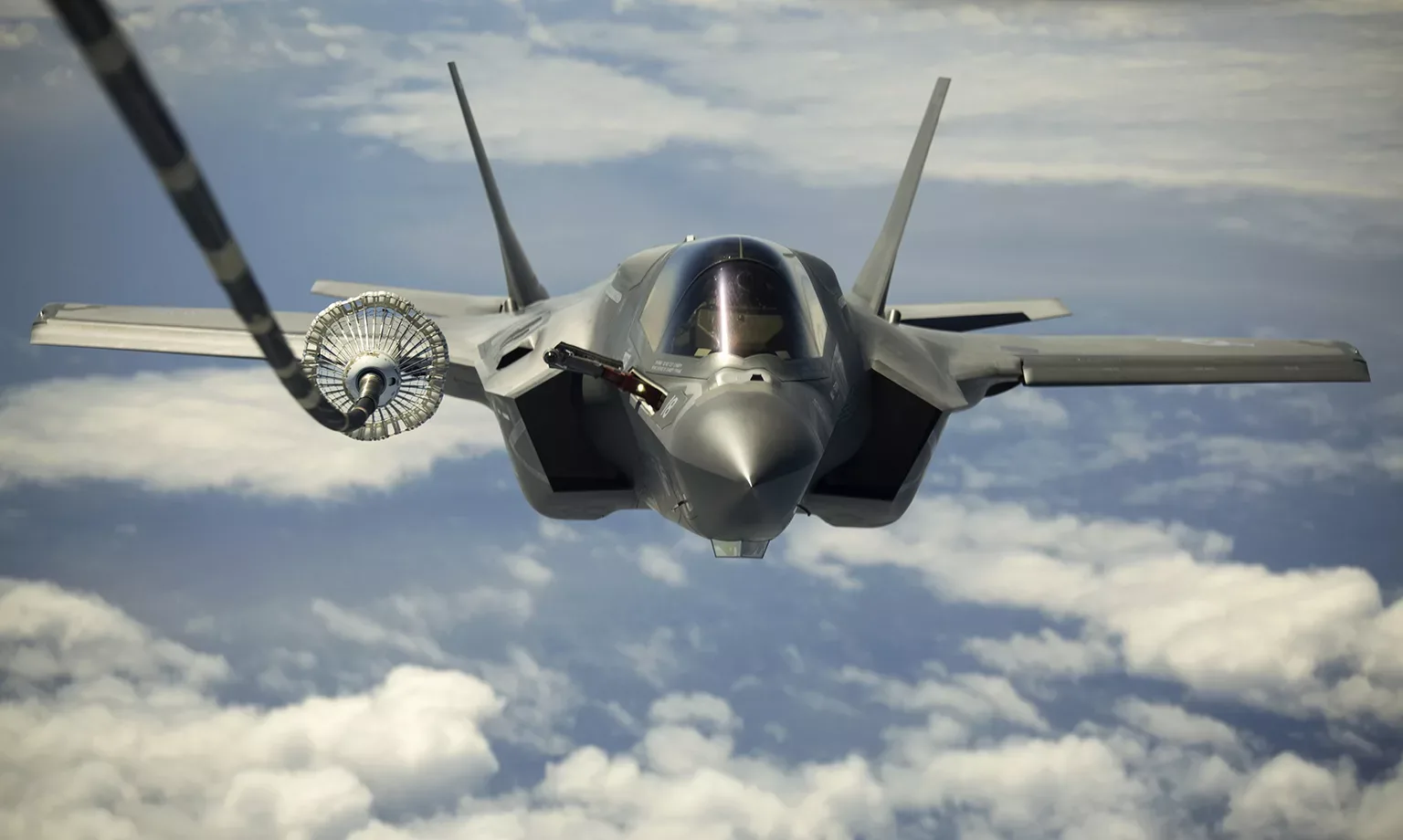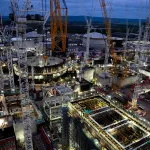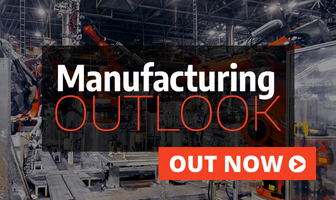Honouring the pioneering legacy of its founder Sir Alan Cobham, Cobham Plc has become a go-to supplier of leading edge connectivity and knowledge across a vast expanse of subsectors within aerospace, defence and beyond.
INTRODUCTION
The explosion of connectivity across all walks of life is one of the great hallmarks of the past decade.
Take a simple observation – there are now comfortably more mobile connections around the world than human beings. Indeed, over the last 10 years the number of mobile connections worldwide has more than doubled from 4.02 billion in 2008 to 8.24 billion in 2018, a trend which is only set to travel upwards.
By 2020 more than nine billion mobile connections will be in operation, while the number of IoT-powered connected devices (cellular and non-cellular) will pass 25 billion by 2025, creating an opportunity worth $1.8 trillion.
The remotest corners of the earth and outer space are also being joined up by technology.
From the launch of nanosatellites to commercialised space shuttle excursions, there are few areas of our planet and immediate universe that cannot be connected. Even while travelling in the air at breakneck speed, passengers and pilots (both commercial and military) are able to connect and communicate with the wider world.
Such unprecedented levels of connectivity are the result of a relentless drive to innovate and improve all areas of life by both public and private enterprise.
In the UK, Cobham Plc is renowned for providing solutions to complex problems in challenging environments, be it in the air, on land, at sea or in space.
With specialisms spanning many subsectors across the broad spectrums of defence, aerospace and space industries, it provides both leading-edge products and services to a host of clients all around the world, from private companies and governments to domestic and international defence organisations.
AHEAD OF ITS TIME
It was a complex problem which sparked the company’s founder, Sir Alan Cobham, to bring his pioneering spirit to the then fledgling aviation space.
After winning the Kings Cup Air Race in 1924, his reputation as an aviation pioneer grew steadily, and it was his dream to make aeroplanes an efficient and effective mode of transport capable of transporting people long distances without stopping.
Having shot to fame with his flying circus tours in the 1930s, Flight Refuelling Ltd was created on October 29, 1934 to focus Cobham’s efforts on air refuelling and its wider application.
It is a story which to this day inspires Air Marshal Greg Bagwell CB CBE, Cobham’s Executive Vice President of Business Development.
“We are still the biggest and only makers of certain air to air refuelling products, which are sat on Airbus, Boeing and Embraer aircraft all around the world, including the new F35,” he says.
“Sir Alan Cobham’s story is just fascinating. He actually saw air to air refuelling through a commercial lens initially with a view to getting passengers across to Australia without stopping on the way, but quickly saw the potential for military application. Now, we’re on every tanker in the world.”
Cobham was clearly onto something in thinking there was an opportunity to be reaped in mega long-haul passenger flights, demonstrated by how much Qantas has invested in launching the world’s first direct commercial flight from Australia to Europe in 2018.
“He was one of the original pioneers of the UK industry,” Bagwell adds, “and not only this, he also brought aviation to the masses and gave opportunities for kids to fly. He transported tens of thousands, and absolutely got the idea of getting the word out there about Cobham and aviation.”
Knighted in 1926 by King George V having spent 18 months flying from South Africa and Australia, Cobham drew in a crowd of more than a million to watch him land on the River Thames.
A true icon of the industry, Cobham Plc today looks to honour his legacy and thirst for innovation by not only continuing to lead the air to air refuelling space, but drive progress across a tremendous array of aerospace, defence and space segments.
PORTFOLIO POWER
Today the company’s portfolio stretches over four major segments: Communications and Connectivity; Mission Systems; Advanced Electronic Solutions; and Aviation Services.
This translates into a workforce of around 10,000 people spread across the UK, USA, Europe, South Africa and Australia, with clients and partners operating in more than 100 countries all over the world.
From the depths of the ocean to outer space, Cobham’s products can be found in almost any challenging environment where communication is paramount to a successful outcome, be it in commercial or military settings.
“The size of our portfolio can sometimes be difficult to comprehend in that you cannot sum it up in a 30-second pitch, however our depth is a strength we sometimes don’t fully realise,” Bagwell explains. “We are engaged in so many different areas in so many different ways, and the quality of what we produce is also a real eye opener – this is cutting edge.”
Bagwell also points towards a blurring of the lines between military and commerce in that the latter is now often advancing solutions that military organisations want to utilise.
“Back when I was in the military in the 1980s, it was us who had the innovations first,” he says. “In 1982 I went onto a Tornado which had a 64K computer, which was only available in the shops a couple of years later.
“Now, the military is eyeing up what the commercial players are up to, and we therefore have an increasing presence in the commercial arena, which is overlapping with military and defence more and more. Having that blend within the company is a massive strength for us.”
CROSSING BOUNDARIES
Bagwell himself neatly represents this merging of expertise.
Working through the ranks of the British Royal Air Force for 36 years from 1981, he brings with him first-hand experience of the realities of air defence and what its requirements are from suppliers like Cobham.
“Like all young boys, you want to play football for England, realise it’s a pipedream and the next best thing is to become a fighter pilot,” Bagwell recalls. “I was 14-15 when it became clear joining the RAF was what I wanted to do, and I went there straight from school at the age of 18.
“To be in command and have responsibility in what have been some tricky moments in history has been fascinating. I would sum it up as hard work, good fun and defined by an outstanding group of people.”
After such an illustrious career with the RAF, what was it that led the Air Marshall to seek new opportunities in 2017?
“I felt like another challenge was possible, and Cobham more or less found me when I was doing some consulting work,” Bagwell continues.
“The company fascinated me. I knew a little about what they did with the air force but that was less than 10 percent of the bigger picture – I had no real appreciation for how broad Cobham is. I knew about its excellent reputation for delivery, especially from my experience as a customer, so maybe it was fate that I ended up here.”
Fate decided, it is now Bagwell’s job to ensure Cobham maximises the potential of its tremendous depth of products and services, knowledge network and geographical reach.
“My role is quite simple – it is to aggregate up everything that Cobham does,” he explains. “When you begin to understand the totality of what Cobham does it changes your mindset… we are the UK’s third largest defence aerospace company, and I’m not sure how many people both in and outside of the group actually know that. Getting our profile out there is so important to how we are perceived.
“Further, we must also realise our synergies across specialisms and territories and make the most out of them. For example, most of employees are not actually in the UK, shown by the fact that around 40 percent of our business comes from US defence. Our individual business units must be able to exploit the international, global standing that Cobham has.”
EVERYTHING CRITICAL WE CONNECT
Like Sir Alan Cobham and air to air refuelling, connecting the seemingly unconnectable has become another hallmark of the company.
This is particularly evident in the aerospace sector, which continues to contribute enormously to the UK economy and will no doubt prove a vital source of export business in a post-Brexit environment.
Last year the industry turned over £31 billion, £27 billion of which derived from exports which represents a jump of 40 percent since 2010. And with the global demand for commercial aircraft set to reach $255 billion by 2028, the opportunity for Cobham to continue supplying global manufacturers is enormous.
“There are many elements to our work in aerospace communications, one of them being the working end and aeroplanes and crews being able to communicate backwards and forwards,” says Bagwell.
“For example, our products are sending live reports on energy performance and engineers at Rolls-Royce will already be looking at data and thinking this engine will need looking at in an hour’s time. They will know the plane is landing in, say, Sydney, and they’ll get the engineers there on standby. It is about predictive maintenance, forecasting faults before they happen.”
The connectivity further extends into the passenger environment, with Wi-Fi and streaming now a rudimentary offering for many airlines. Part of the SATCOM range, Cobham’s AVIATOR portfolio of SwiftBroadband and Classic H+ systems provides voice and data connectivity for both cockpit and cabin communications, enabling passengers and crew to remain connected in the sky.
“Customer experience is a big part of what we do here now, as airlines are wanting to meet rising consumer expectations,” Bagwell adds. “Within the next few years it will be a small minority of planes that are unconnected.”
In the maritime space, Cobham SAILOR and Sea Tel solutions are designed to meet the communications needs of any sized vessel or fleet of ships, no matter where they are.
“Our SATCOM portfolio extends to the likes of Maersk and their ships, and we also sponsored and supplied all the ships on the Volvo Ocean Race,” Bagwell says. “If you want guaranteed connectivity out at sea and in harsh environments, then Cobham will deliver it for you.”
On land, the company’s portable satellite and mobile products serve the likes of government, emergency services, law enforcement, media, transport, energy and mining clients.
IN DEFENCE OF THE WORLD
Cobham’s most significant portion of business, however, is conducted with the US Department of Defense. Around 40 percent of the firm’s revenue is derived from US defence and security contracts, while UK and rest of the world defence accounts for another quarter of overall income.
Again, this area of business comprises solutions aimed at operations at air, land, sea and in space.
Examples of Cobham’s leading-edge defence products on land include ground penetrating radar, which delivers enhanced detection capability of improvised explosive devices, and thermal control vests, restraints and cryocooler technologies, designed to improve efficiency and safety in hostile environments. Further, more than 150,000 vehicle intercom systems are in military service worldwide.
At sea, coast guards across the globe use Cobham SATCOM equipment while specialist diving products are used by military forces internationally. Additionally, Cobham’s microwave and radar technologies are fitted into the most advanced maritime defence hardware, including the AEGIS class cruiser.
In the air, the company’s technology is embedded on many of the world’s most modern military aircraft, from helicopters to the ground-breaking F-35 fighter plane.
“The headline is that this is fifth generation, and we are accelerating at a rapid pace,” says Bagwell. “The real quantum shift with this is not necessarily the aircraft, which itself is a feat of engineering, but all the systems and sensors inside it, and how this allows you access, process and act on information.
“In my day you would pass information off radar by voice. Now we have systems that use multiple sensors, and I would describe the F-35 as a quarterback that can see the entire battlefield – it is an orchestrator.
“We supply a lot of the electronics on the project, more than 100 components… the sum of the parts is impressive.”
Cobham also contributes significantly to defence capabilities in space, with microwave equipment on many major European military communications satellites. The firm also produces regulators for missile defence systems and hypersonic test vehicles, while every new wideband global satcom satellite relies on 100-plus microelectronics modules made by Cobham.
SECURE SERVICE
Asides supplying vital components, Cobham also provides training to military forces the world over, one such specialism being in electronic warfare.
“We make a lot of the components, so we know how the system works and are perfectly placed to come in and provide these services,” continues Bagwell, who goes on to explain how Cobham creates complex simulations for American and European air forces to respond to.
“The contract we are working on currently is a project called O2O, which we have been delivering for the past 25 years. That involves Cobham Falcon jets and we can replicate various electronic signals, meaning we can simulate fighting enemy X and see how your radar stands up to certain jamming attempts. We then debrief and walk through the tactics and strategies to counter that threat.
“People judge military forces on the number of ships and number of aircraft, but the true performance indicator is the way you train and the environment you are able to operate in. Investing in the best training is where the real value lies.”
Until recently Cobham also delivered helicopter training services for the UK Ministry of Defence, a capability it is exploiting further with military and non-military clients around the world. Now operating as the Cobham Helicopter Academy out of its base in Newquay, the organisation offers a unique blend of military and commercial experience and expertise.
Its offering is split into four major categories comprising rescue, military, emergency and civil training services.
In Australia, Cobham even manages a specialist airline on behalf of Qantas for oil and gas workers. Carrying around 1.5 million passengers a year to remote areas which require specialist rough landings, it operates like a commercial airline with full customer and cabin services.
WATCH THIS SPACE
It is space, however, which for Bagwell represents the most exciting area of growth for Cobham in the commercial arena.
The firm has enormous pedigree here. Every US astronaut since John Glenn has breathed through a Cobham regulator, while it also developed the world’s first demisable composite propellant tank, a system which extends the life of satellites.
NASA’s Mars Science Laboratory Mission, successfully launched in 2011, relied on Cobham equipment, and the firm further supplies command and data handling to some of the most powerful flight-proven commercial spacecraft in existence, such as the Lockheed Martin A2100 satellite.
“Space is a big area to watch over the coming years,” says Bagwell. “Although a lot of our work is classified, we are on most satellite constellations in one way or another – if you aggregate up everything we can offer the space industry, it is a huge growth area for us.
“What we are now beginning to see are whole networks of smaller satellites being deployed because people want control over their own constellations. A few years ago, a satellite going up was a big deal – now it is occurring on an almost daily basis. The technology and what you are able to do in space has come on in leaps and bounds, and Cobham is at the forefront of this processing and the electronics involved.
“How you control this environment is going to be key,” he continues, “and we have some of the world’s most advanced testing facilities which allow this to happen. Space is complicated. It is not about throwing a computer quite high in the air. The electronics needed are robust.”
FINGER ON THE PULSE
If Cobham is to fully exploit the opportunities presented by not only space, but all the other areas it harnesses expertise, then paying attention to internal processes is going to be critical.
“This is about keeping on top of our manufacturing processes, the technologies we use, some of which we’ll have inhouse and others we’ll use partners for,” Bagwell explains. “Data handling, for example, is another increasingly important area now, understanding the risks associated with loss of data and cyber threats.”
The conversation takes a natural turn to the importance of attracting, developing and retaining the necessary skills to futureproof the business.
From graduates out of university to seasoned engineers looking for a new challenge, ensuring that the brightest minds choose Cobham over rival organisations could be a defining factor of the firm’s future.
“One of our real advantages is our global reach, meaning we can look at every university around the world,” adds Bagwell. “For young kids wondering what to do at university, the marketplace for engineering is exploding right now, and there are hundreds of specialisations that organisations like ours need, and we are fishing in a relatively small pond at the moment.
“One thing Cobham is really championing is getting more women into engineering jobs. Half of the workforce are women, so it makes complete sense to train up and encourage this half of the population to pursue engineering as a career. We need people who are agile and ready to adapt as the times move.”
This philosophy is backed up in practice. Around seven percent of Cobham’s revenue is dedicated to research and development, a vital commitment if the company is to remain at the forefront of developments across its industries.
THE POWER OF PARTNERSHIP
Bagwell also readily admits that Cobham alone cannot innovate and invest in every leading-edge development.
The firm relies on an external network of partnerships to complement its in-house capabilities, and over the years has also acquired and absorbed a variety of companies, each with their own unique pedigree and story.
“We are also primarily a subcontractor, a part of the supply chain, so appreciate what it is like to be loved by an original equipment manufacturer,” adds Bagwell. “We absolutely feel what our suppliers feel.
“If the supply chain doesn’t work, the product, which ultimately has a Cobham stamp on it, doesn’t work either. I mentioned the need for us to find skills and capability, but at the same time we know we can’t do it all, so partners and suppliers are critical to us. It is about finding these smaller companies who are pioneering and giving them the opportunity to bring innovation to market.”
Utilising the pioneering spirit of smaller companies also helps larger players such as Cobham to manage risk.
“Our relationships are collaborative and our R&D investment isn’t all about spending money on things, rather investing in ideas and finding new partners,” continues Bagwell.
“Big companies by nature are more risk averse, so we must interact with the smaller players who may have that little spark we need to make the next step. We have so many engineers and people out there networking, and Cobham’s network of knowledge is something even we may underestimate.”
LOOKING AHEAD
Collaboration, both with external partners and internally across geographies and business units, will ensure Cobham continues to serve its diverse portfolio of clients around the world.
For Bagwell, a key priority for the coming period is communicating an effective message about what the company is and what it is capable of. Cobham is rightly revered as a specialist in numerous technological applications in niches across aerospace and defence – now is the time for the dots to be joined and for the firm to be recognised as one major, multifaceted entity.
Bagwell concludes: “We have a lot more to offer, and I want us to exploit that. I think you will see the brand become increasingly well-known as we continue to do this – we are up there with the world’s largest and more is to come.
“If you are looking for a business that is representing Britain on a global platform, working in some of the most hi-tech environments in space and aerospace with an exporting outlook, that is Cobham. We represent the UK, and I am optimistic that we are going to remain and develop as a force to be reckoned with in markets worldwide.
“Our diversity is massive, and our operation is global.”





















